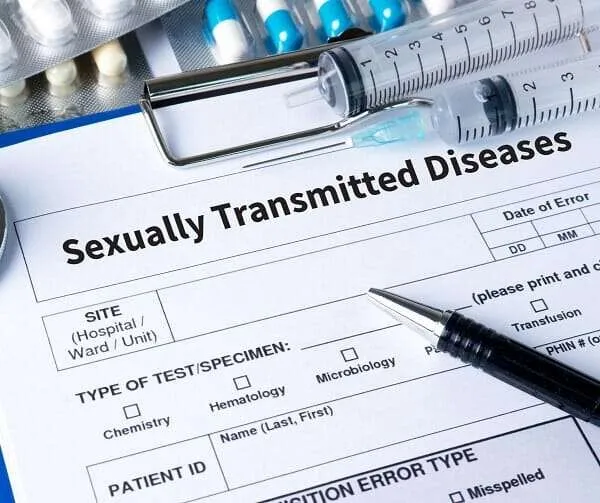Understanding Sexually Transmitted Diseases: Prevention, Awareness, and Treatment:Sexually transmitted diseases (STDs) pose a significant public health concern worldwide. These infections are primarily transmitted through sexual contact and can have serious implications for individuals’ health and well-being.
 In this article, we will explore the prevalence, types, prevention strategies, and treatment options for sexually transmitted diseases.
In this article, we will explore the prevalence, types, prevention strategies, and treatment options for sexually transmitted diseases.
The Prevalence of STDs
Sexually transmitted diseases affect millions of people globally. According to the World Health Organization (WHO), more than one million new cases of sexually transmitted infections (STIs) are contracted daily, and an estimated 376 million new infections occur each year. These alarming statistics emphasize the need for increased awareness and effective prevention measures.
Common Types of STDs
There are numerous types of sexually transmitted diseases, each with its own symptoms, modes of transmission, and potential complications. Some of the most prevalent STDs include:
- Human Immunodeficiency Virus (HIV): HIV weakens the immune system and can progress to Acquired Immunodeficiency Syndrome (AIDS). It is transmitted through unprotected sexual intercourse, sharing needles, and during childbirth or breastfeeding.
- Chlamydia: Chlamydia is a bacterial infection that can affect both men and women. It is often asymptomatic but can cause pelvic inflammatory disease (PID) in women if left untreated.
- Gonorrhea: Gonorrhea is another bacterial infection that can lead to serious complications if not treated promptly. Symptoms include painful urination, abnormal discharge, and in women, it can cause PID.
- Human Papillomavirus (HPV): HPV is a viral infection that can lead to genital warts and increase the risk of certain types of cancer, including cervical, anal, and throat cancer. Vaccination against HPV is recommended for both males and females.
Prevention Strategies
Preventing the transmission of STDs is crucial in reducing their prevalence. Here are some effective prevention strategies:
- Safe Sexual Practices: Practicing safe sex, such as using condoms consistently and correctly, can significantly reduce the risk of contracting or spreading STDs.
- Regular Testing: Getting tested regularly for STDs, especially if sexually active with multiple partners or engaging in high-risk behaviors, allows for early detection and timely treatment.
- Vaccination: Vaccines are available for certain STDs, such as HPV and hepatitis B. Vaccination can provide long-term protection against these infections.
- Open Communication: Open and honest communication with sexual partners about STDs, testing, and sexual history is crucial in maintaining sexual health.
Treatment Options
Early diagnosis and treatment of STDs are essential to prevent complications and further transmission. Treatment options vary depending on the type of infection and may include:
- Antibiotics: Bacterial STDs like chlamydia, gonorrhea, and syphilis can often be treated with antibiotics. It is important to complete the full course of medication as prescribed.
- Antiviral Medications: Viral STDs such as HIV and herpes have no cure, but antiviral medications like Azithromycin Tablet Uses in Hindi can help manage symptoms, slow down the progression, and reduce the risk of transmission.
- Supportive Care: In cases where there is no specific cure for a particular STD, supportive care focuses on managing symptoms, preventing complications, and improving overall well-being.
Conclusion
Sexually transmitted diseases continue to be a significant global health concern. Prevention through safe sexual practices, regular testing, and vaccination is vital in reducing the transmission and prevalence of STDs. Early diagnosis and appropriate treatment are essential for individual well-being and preventing further spread. It is crucial to promote awareness, education, and open dialogue about sexually transmitted diseases to foster a healthier and safer society. Remember, knowledge is power when it comes to protecting yourself and taking proactive steps towards sexual health. By staying informed and practicing responsible sexual behavior, we can collectively work towards reducing the burden of sexually transmitted diseases.
In conclusion, sexually transmitted diseases are a serious public health issue that requires our attention and action. With millions of new infections occurring each year, it is crucial to prioritize prevention, raise awareness, and promote regular testing and treatment. Safe sexual practices, open communication, and vaccination can significantly reduce the risk of transmission and help protect our overall well-being. Remember, taking responsibility for our sexual health not only benefits ourselves but also contributes to building a healthier and more informed society. Let us strive towards a future where sexually transmitted diseases are effectively controlled, and individuals can enjoy fulfilling and safe sexual relationships.
see aslo : Azomycin 500 Uses in Hindi






